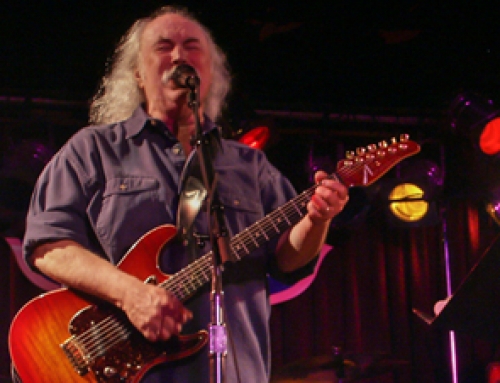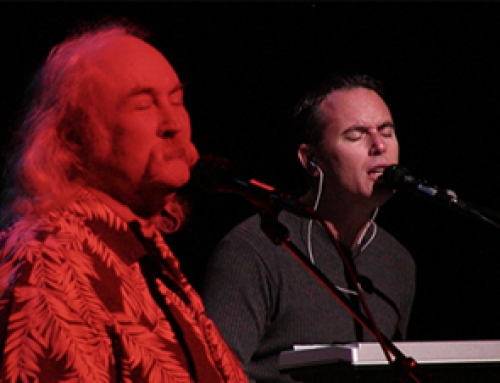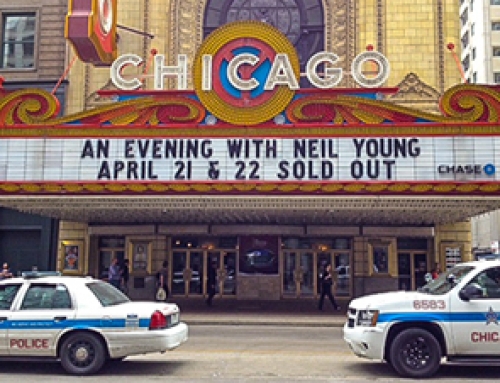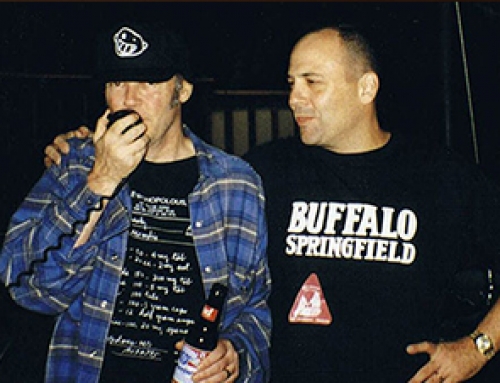By: Dolf van Stijgeren – 4WaySite
Thanks to: Joseph Castillo, Bob Egan, Stefano Frollano, Paul Higham, Gabriëlla van Karsbergen, John Kwit* and Kurt Schilligo
Photos: Greg Reeves, Henry Diltz, Tom O’Neil (Gundelfinger) and Jack Robinson
Year: 2012, 2013 and 2014*
Greg Reeves is best known for playing bass on Déjà Vu and After The Gold Rush. In 1970 he was abruptly fired from CSNY. But Greg and Neil Young remained good friends. Both Neil and Nils Lofgren had great praise for Greg’s playing style, noting his versatility and how he was able to move fluidly between simple and complex bass lines. But after a few years, Greg vanished from the music scene….
4WaySite catches up with Greg Reeves.
4WS: How did you get involved with music and was the bass guitar your first instrument?
GR: I got involved with music at a very early age, at nursery school playing piano and guitar at one of the churches I attended as a child. Bass was not the first instrument I learned to play.
4WS: So what was the first instrument..?
GR: Actually the very first instrument I learned to play was a miniature guitar… I taught myself from a book that came with the guitar. I was six-years-old and in the first grade.
4WS: Is it true you began as a session bass player with Motown Records when you were only 12? What was that experience like and what are some of the recordings you played on?
GR: No, I did not start as a session player at 12. Motown and Chess Records wanted me at that age, but my mother would not hear of it! I was approached by the son of the big band director Jimmy Luncerford Sr. and Jimmy Sibley (who was my first manager) who also managed the Ohio Players and George Benson. The best-known song I played the bass on, is called “No Matter What Sign You Are”, which is the last song that Diana Ross sang with the Supremes as a full group. Eddie Singleton and Miss Ray Gordy, who Rick James and me were living with at the time, wrote the lyrics for “No Matter What Sign You Are”. I overdubbed the bass at Sunset Sound Recording Studio with Eddie Singleton.
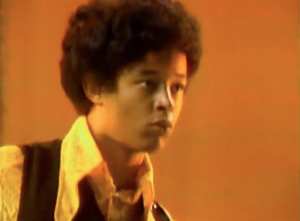
4WS: In late 1968, Rick James and you moved to Los Angeles, California, and formed a band called Salt and Pepper (Rick James was then knows as Rick Matthews). A later version consisted of Coffi Hall from Mama Lion and Merryweather and guitarist Dave Burt and Keyboardist Ed Roth from Merryweather. Former Buffalo Springfield road manager Chris Sarns played bass for a while, but which instrument(s) did you play?
GR: I played acoustic guitar and bass as well as co-wrote songs for Salt-n-Pepa with Rick James.
4WS: Did you play the bass on the Temptations’ “Cloud Nine”? There seems to be some disagreement over this…
GR: I played tambourine, I was supposed to play bass on Cloud Nine, but I was too nervous. Norman Whitfield who was the producer of the session and who hired me for Motown, was my mentor there. He told me if I was not able to play the bass, then splay the tambourine! I can remember it like it was yesterday, Norman said “You are going to play something, so pick up that damn tambourine and start playing it like you own it”!
To put screws of verification to this story, Ken Rice (Spider Webb) who was the drummer on “Cloud Nine”, was also on the road with me in a group called Sampson and Delilah before we came to Motown together. He was hired one week before me.
FROM PETER TORK’S HOUSE TO YASGUR’S FARM
4WS: In an recent interview you said Neil Young invited you to a party at Monkee Peter Tork’s house, rented by Stephen Stills. The next day they asked you to come and play with them; Bruce Palmer (Buffalo Springfield) who rehearsed with CSNY for a couple of weeks wasn’t pleased, was he…?
GR: No Bruce was not pleased at all! David and Graham drove up to the apartment where we lived on Olive Drive at the time, right behind the Playboy Club on Sunset Blvd. From the pool I saw them knock on the door, and Rick yelled for me. They asked Rick James who I was and Rick came, got me and brought me out front to the limousine that Graham Nash and David Crosby were in and asked me in front of them, would I mind going with them to jam. I asked Rick James “Aren’t you coming too?”. He said “They want you to come alone”. I went back to the house, grabbed my Fender precision bass guitar and Gibson acoustic guitar, climbed into the limousine and never came back to Rick’s house again. They would not let me go. From the first time jamming with me, they would not let me leave. I stayed with Stephen Stills, Dallas Taylor and Graham Nash at Peter Tork’s mansion in Studio City.
To this day I don’t how Graham and David knew where Rick and I lived.
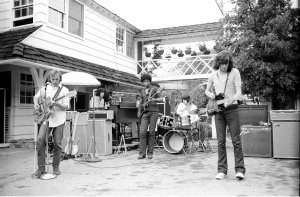
4WS: How did you blend in from a musical point of view: your background in playing soul doesn’t suggest a natural fit with some of CSNY’s more country and folk tinged songs?
GR: Music being “the universal language”, it let CSN&Y and me understand and communicate with each other very easily, and at the same time we were having a ton of fun! Like colors in a famous painting, we blended well together.
4WS: Before we talk about Déjà Vu, I would like to talk about After The Gold Rush. Most of the album was recorded at a make-shift basement studio in Young’s Topanga home. The Neil Young biography Shakey claims Neil was intentionally trying to combine Crazy Horse and CSN on this release, with Crazy Horse appearing alongside Stephen Stills and you. What do you recall and did you play with Stills?
GR: Recording After The Gold Rush with Neil, was a rush to say the least! When I recorded “Southern Man” and “Only Love Can Break Your Heart” with Neil and Ralph [Molina], I was not just making records, I was amongst great folks! Neil and Ralph are Real Good People! We made great music together. I remember when Neil’s then-wife Susan was so excited that I was going to be recording with Neil – you know being fired from the group and all. We were all Really Good friends then. Neil, Ralph, Nils Lofgren [former member of Bruce Springsteen’s E Street Band as well as a former member of Crazy Horse] and myself recorded live together! No OVERDUBBING!!! It was live, not Memorex.
Stills did whatever he did for Neil when I was not around. After all he and the other two fired me, you dig? However, Neil and I stayed friends for many years after I was fired From CSN&Y.
4WS: Again, your age. You were rumored to be as young as 15 years old during the recording of Déjà Vu in 1969. In an interview with 4WaySite in 2007, drummer Dallas Taylor recalled you had a fake driver’s license, showing your age to be 19. Can you shed any light on this?
GR: I will say this: James Johnson [Rick James] had arranged for me to possess at the time a fake driver’s license, I will also say I was very young, very young!
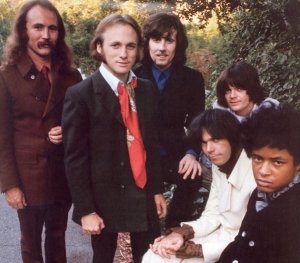
4WS: In 1969 there were quite a few CSNY shows with you and Dallas Taylor as the rhythm section, spanning from July to December and a few in 1970. You played the bass parts that Stills laid down for Crosby, Stills & Nash. Stills and Young had a lot of guitar interchanges where you had to keep the rhythm going behind on stage. Did CSNY give you a chance to flex your musical chops on stage?
GR: Flexing my chops was part of my job! I not only created grooves, and bass parts, but I had to perform them as well. CSN&Y allowed me to really stretch out when I played with them. We had a ball playing with each other!
4WS: What impressed you most during the CSNY tours back then?
GR: I was impressed with the reception of the fans CSN&Y had, they were not just a hot group, we were a real hot item!
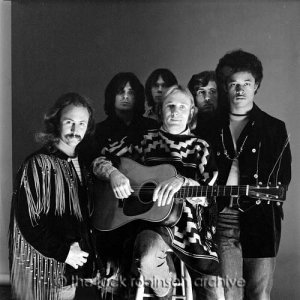
Original photography by Jack Robinson.
4WS: Any memories of Woodstock or Altamont that you’d like to share? What was your favorite CSNY live show overall?
GR: When Graham Nash and me [and Dallas Taylor] arrived at Woodstock, it was raining buckets of water. We came via helicopter. The helicopter crashed landed on the main power line, that was supplying all of the electric power for the concert! After the crash landing the pilot instructed us not to touch anything in the helicopter and sit still. We did this and it seemed at the time forever. It was hairy scary to say the least! To top off the misery, when it was our turn to play live, we discovered Chris (our roadie) had not flown our equipment to Woodstock correctly. I used Jim Fielder’s bass from Blood Sweat & Tears to play “Sea Of Maddness” with Neil and Dallas Taylor. It was pouring down rain when we performed. Jimmy Lee Marshall Hendrix was on stage with us laughing his ass off at us playing in the rain.
I don’t have any good memories of Altamount other than the Stones, CSN&Y, and the Jefferson Airplane all shared the same tiny little trailer for a dressing room. That entire day we were all pretty “tight”! A book by itself.
4WS: There is a “rabbit-story” that I will talk about later on. On a rare CSNY live recording from 1969 (Detroit, December 14 or 16, 1969) I heard a remarkable conversation on stage about you. David Crosby and Graham Nash talked about their bass player “Who carries a rabbit” and “His [the rabbit] name is ‘Late’”. Can you elaborate on this? On a side note: during that show Crosby called you “A present from God.”
GR: My mother (may she rest in peace ) brought Late to me when we played in Ohio. The name came from Stephen Stills who nicknamed me “Late Reeves” for always cutting it close when we had to perform.
FROM YASGUR’S FARM TO …
4WS: What do you remember most clearly overall about the recording sessions from the Déjà Vu album?
GR: What I remember most about Déjà Vu is the wonderful music that came from those sessions. There was true musical harmony amongst us back then.
4WS: Stills had dominated the playing on the first album. What was Stills like in the studio during the Déjà Vu sessions and did he find it easy to relinquish control?
GR: Stephen is, was, and will always be Stephen Stills. The man is a gift to the music business.
4WS: What was your (creative) contribution on the Déjà Vu album and which tracks feature your bass playing?
GR: My creative contribution to Déjà Vu began the second day after I joined the group. I had written a bass hook for a song I had showed Rick James. Dallas [Taylor] and I were jamming alone in the music room of the [Peter Tork’s] mansion. When I played it for him, he stopped playing drums, ran and got Stephen who got on the Hammond B3 organ and start playing along.
A little while later Bill Halverson was recording me on a remote recording device. My bass line became the riff on “Carry On”! I called and told Rick James what was going on and he said “Don’t worry they are giving you a point from the record.”
4WS: Besides “Carry On”, which tracks feature your bass playing on Déjà Vu?
GR: Me and my bass playing were part of a group. However, I like what I played on “Woodstock”. I enjoyed contributing my talent to help make that LP.
4WS: Most of the songs were not full band efforts (except for “Woodstock”, “Almost Cut My Hair” and “Helpless”). Is this correct?
GR: Yes, to answer your question of “full band” contribution.
4WS: Were there other completed tracks that you think should have made the final cut? If so, which ones?
GR: There was a song that Graham wrote I thought should have been on the LP which was called “Horses Through A Rainstorm”. Great song by Graham.
4WS: When the album came out, it was credited to the six of you. Did you argue for the credit, or was it offered?
GR: They offered the credit to me, I never asked for it! On After The Gold Rush, same thing. Neil Young gave me top billing credit for my contribution.
4WS: Was it Stephen Stills who told you of your dismissal in late April, 1970?
GR: Stephen fired me. How I remember that day very well! When Stills fired me, Neil stood between me and Stephen and said very loudly, that he did not care, or give a rat’s ass about what they had decided. He still wanted to work with me. Neil and I began recording After The Gold Rush the very next day!
4WS: At the time, there were a number of reasons given for your being dismissed from the band. A few quotes including another one about rabbits…:
1) In an interview with the popular Dutch music magazine Oor Stills said of your bass playing “[He] freaked too much on the bass and no one could keep up because [he] did not play one rhythm the same…. He could play bass imaginatively, but he has to be predictable as well”.
2) In Dave Zimmer’s book “Crosby, Stills & Nash: The Biography” Crosby says you decided you were an “Apache witch doctor” and in a recent interview with Mojo you said “They thought I was trying to put spells on them.”
3) In an interview with Sounds in 1974, Nash implied that you were becoming a nuisance, wanting your songs played by the band, and had “got crazy, started chewing rabbits and went up a mountain”. Yet Nash had also called you a “kick-ass bass player”. What is your side of the story?
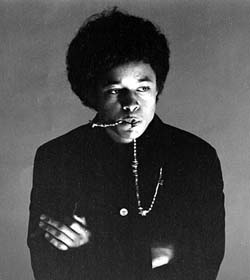
Original photography by Jack Robinson.
GR: Stills had a problem with himself, just dealing with himself. My answer is this: listen to what I did on After The Gold Rush, and “Immigration Man” for Graham and David Crosby after they fired me!
I find my work to be professional, don’t you? Being a medicine man or not (which is when I was more a practitioner of the Native American way of life) has nothing to do with the fact that they needed me to make the “track” portion of their records complete.
Graham Nash tried eight bass players, including Stephen Stills on “Immigration Man” before he asked me to play. What’s up with that? When I was approached by Larry Kurzon to do “Immigration Man”, I was very reluctant to perform for Graham and David. Remember, they threw me out of the group! And then had the gall to ask me to perform and write a part for “Immigration Man”. When I did the session with Johnny, there was not even a chord sheet to follow. Not Being able to read music, it was and is not an excuse. I wrote a part for their music one more time. Graham Nash and Neil Young did “try” to help in making Working Man a record. But trying is only trying. It is not going to get the job done. For them I always got the job done! Listen to “Southern Man”.
Graham says my songs were weak. However, Graham was the second one after Neil Young to sing on my songs after I signed with Clive Davis!
When I signed my second record deal with David Geffen, Graham came and sang again. Does that sound to you like I had weak songs?
4WS: You continued to write and record after your time with CSNY. Who contributed to these sessions?
GR: Stevie Wonder played drums, and Nils Lofgren, played guitar, along with Duane Allman with me in Macon, Georgia, which is a whole book of experiences. Duane (may he rest in peace) shared a room in Macon right before he was killed. I loved Duane dearly!
By the way, I wrote “I Got Your Number” which was recorded by Tom Jones and Boz Scaggs. Boz Scaggs has re-recorded my song numerous times over the years and Tom Jones covered it five different times through the years. Boz Scaggs also covered my song on the very famous LP Slow Dancer and recently just re-released a live version of my song he cut in Japan.
My song was also recorded by Johnny Bristol (may he rest in peace) who was a very famous and prolific Motown Records producer/writer/artist who covered my song on his top ten LP Hang On In There Baby.

September 6, 1969: CSNY are on the This Is Tom Jones TV show in Los Angeles and perform “Long Time Gone” with Tom Jones.
4WS: You and Neil Young were good friends and Neil’s influence over the choice of musicians in CSNY has been considerable. What else did Neil say to you before you left CSNY?
GR: Neil being a man of action, tried to help me in every way possible to help me get through whatever was bugging me! He was and I hope, still is, my friend! He and David Briggs (may he rest In peace) tried to help me make records, etc. Neil is the real Neil, as David Crosby used to say!
4WS: Did the fact that Neil Young could not persuade the others to keep you reflect the balance of power in the band at that point in time?
GR: Neil couldn’t care less about any power, or control. He only wanted to make records. Me recording with CSN had come to a standstill.
4WS: A few weeks after you left the band, Dallas Taylor was fired. In the above-mentioned interview with 4WaySite, he said “I have not heard from Greg since he was fired from the band.” Have you never been in touch with him? Didn’t the firing of both of you create a bond?
GR: Dallas and I ran in different social circles, so I did not see him that much after I left CSN&Y. No bond was created between Dallas Taylor and myself. Very different life styles.
4WS: In the same interview, Dallas Taylor said you possibly spent some time in prison. Is this rumor correct?
GR: I spent time in a Mexican jail with the Mexican president’s nephew as a political prisoner, because we had tried to smuggle marijuana across the border. True story! Neil Young sent me money (via Western Union) to pay the Mexican police (Judicial Government Police) for my freedom…
4WS: How did it feel to be associated with a massively successful album but be denied the opportunity to tour to promote it?
GR: Being part of a successful team was great! Being denied touring did not bother me at all. Sure I would have loved touring again with CSN&Y. But all good things must to come to an end sooner or later. Right ?
4WS*: It has been reported that in 1978 you sued Crosby, Stills, Nash and Young for $1 million in unpaid back royalties. How did that end up?”
GR: I did try to sue CSNY in 1978 for record royalties for my contribution to the Déjà vu album. Jay Rothman was my attorney. I was originally told by CSN&Y that the album was not earning any income. Back in those days, it was very difficult to prove record sales, even by information from the RIAA.
Here is some background information: When I was incarcerated in Mexico, Neil Young had his manager Elliot Roberts wire me money ($25,000.00) via Western Union so I could pay the Federal Judicial Police to release me.
Elliot told me in the Western Union telegram that the money I was being sent was only an advance from my Déjà vu record royalty, the “point” I was promised.
4WS*: What is the exact time period that you spent in the Mexican jail?
GR: I was incarcerated for seven months, from September of 1977 through April 1978.
4WS*: What happened when you were released from jail and came back to the United States?
GR: When I came back from my incarceration in Mexico, I was broke. Graham Nash said to me, “Greg , we’re going to give you a grubstake” – which was a very small amount of money to get me on my feet. I accepted this money from CSN&Y, however because they lied to me about what was actually owed to me we never came to a final mutual agreement.
I did not have the funds to keep fighting legally and had to back off. I did not settle. However, that does not excuse them from not paying me my production point for the music I contributed to make. The point was given to me from 1970-1973, then they stopped paying me.
You see, when I played with CSN&Y, I had to create the bass part, tempo and the groove for their songs I recorded on. I had to write music to their music. Examples include my work on the albums Déjà vu, After the Gold Rush (Southern Man & Only Love Can Break Your Heart) & Crosby/Nash (Immigration Man). They never gave me sheet music to play! They never even played for me on their instrument of choice what they wanted me to play! In addition, Dallas Taylor can verify how CSN&Y ripped off music hooks from me to make Déjà vu.
They lied and told me since I was not on salary, my job was to create whatever was needed (the groove and the bass part) to fulfill my obligation as a member of the group. I did my part, but they lied by telling me that Déjà vu was not making any money!
Later they lied to me when they needed me to do Immigration Man and said I’d be reciprocated for Déjà vu if I wrote the music for the bass part and recorded it. Like a sucker I believed Graham Nash and got burned again!
In 2011, I retained Barry Rothman, Jay Rothman’s brother, an ex-Warner Brothers attorney who got the $25,000,000.00 from Michael Jackson, to sue CSN&Y for taking advantage of me and lying about the royalties that had been earned from Déjà vu.
When Barry took over in 2011, he said that his brother Jay had botched up my earlier case against CSN&Y very badly and whatever I had been given from them or negotiated was done under duress since I was fresh out of Mexican Prison. I was mentally thrashed from the whole Mexican prison ordeal. I suffered nightmares for years from the experience. I saw things in the jail that made people do horrible things to survive. Some even committed suicide.
4WS*: What were the final results of your 2011 lawsuit against CSN&Y? Are any matters still pending?
GR: I retained Barry from 2011-2013, but then I ran out of funds to pay him to handle my complaint.
4WS: Do drummers and bass players have a special musical relationship?
GR: I don’t know. Do they really?
4WS: Speaking of drummers: you have worked with both Dallas Taylor and Johny Barbata (on Nash’s “Immigration Man” from the album Graham Nash/David Crosby). What do they have in common and what are the differences?
GR: Their talents were comparable. When I did “Immigration Man” with Barbata, I knew I was playing with a human metronome [a device that produces regular, metrical ticks, beats or clicks in beats per minute] who was gifted with a natural, innate sense of creating rhythmic drum patterns on the spot. He reminded me of professionals I had played with at the company (Motown). Dallas has all of the above skills as well and the ability to focus on getting the job done! There is very clear evidence in the recordings they both have done in the past, that they both were super star drummers.
4WS: Your successor was Calvin Samuels. Have you ever communicated with him?
GR: No, I never have even met the man.
4WS: Hindsight is a wonderful thing and we tend to regard CSNY’s success as somehow inevitable and pre-ordained. Did it feel like that at the time?
GR: They worked hard for what they have! Predestined by God. Yes.
4WS: Last year 4WaySite found the location where the cover photo of Déjà Vu was shot (check out the section Everything CSNY). What do you remember of the shoot?
GR: When we did the photo shoot in Novato, it was a gas! Graham bought this old box camera and we all had to stand still, stiff as boards, to take the picture.
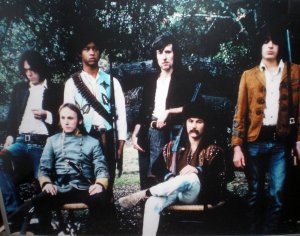
4WS: After the dismissal you played bass on several albums, including Neil Young’s After The Gold Rush and on “Immigration Man” from Crosby & Nash’s self-titled album in 1972. Ten years later you started to work as a producer for George Clinton, but then you vanished from the music scene. What happened to you?
GR: I went back to school and got an associate degree in Mandarin Chinese here in Orange County, Ca. at Coastline College. My transcript shows a 4.0 average – honest injun [smile]. I also got my head together serving God and being, as I am now, totally obedient to God.
EPLILOGUE
4WS: In May 1970 you already had your own songs which were refused by Crosby and Nash, and now you admit you were not ready yet. Do you think you have matured as a writer?
GR: My first solo release will be available for download. I would have to say that over the years I have matured. So I would tend to say “Yes” my music has also. Still a wild guess.
4WS: What is the status of your group Los Démones?
GR: The name of my group is and will always be Outlaws. Los Démones had a great short time together as a group.
4WS: Can you tell us about “Working Man”?
GR: “Working Man” is a song that I started writing back in the late seventies. Graham Nash and Neil Young did their damnest to make that song a record but I was not “ready” as David Crosby once said. However, the song will be released this August.
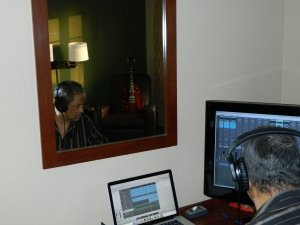
4WS: Is there a funny Greg Reeves-CSNY story that comes to mind?
GR: Yes. One day in Studio City at Peter Tork’s house, Graham asked me, in front of everyone, what color I was. I said “green” and Stephen laughed so hard, tears came to his eyes!
4WS: Have you ever thought of writing your memoirs?
GR: Yes. Last year a top-rated publisher wanted me to write a book regarding what I witnessed and experienced at Motown Records while in Detroit.
4WS: A standard-question of 4WaySite: what is in your CD-player/iPod now?
GR: I listen to a wide variety of music from pop to rock!
4WS: But, can you give me a few examples?
GR: The Everly Brothers. Marvin Gaye. Arrowsmith. Old Neil Young recordings. Michael Jackson. Green Day and Taylor Swift.
4WS: Back to the future and my final question: what’s your current motivation, your next goal?
GR: What I’m currently motivated by, is the great reception I’m receiving from pros in the music business, as well as nonmusical professionals, with regard to the music I’m about to release. Statements like “Greg, when is that song going to be ready for downloading?” or “I would download that, Greg”. That type of response is so great to hear!
4WS: So, you are going to release something?
GR: Last month I did an extensive interview with Prism Film Co, from the UK. They came to me from the UK – it was a gas! Believe it or not, I really have music to release very soon. I let Elio from Prism Films hear a sample of my music. He liked it so well that he offered to promote it on his DVD page of their site.
4WS: What kind of music can we expect?
GR: My music is geared for dance and Top Forty radio airplay. After all these years I’m almost ready man. Two radio disc jockeys from “Hollyweird” are involved in my recording project, Dolf!
4WS: Thanks for your time, Greg, and I wish you good luck.
GR: Thank you Dolf, for the interview and I believe you’re gonna like my music.

Greg Reeves: “This is the plcae I met Neil for the first time with Rick (Mathews) James”
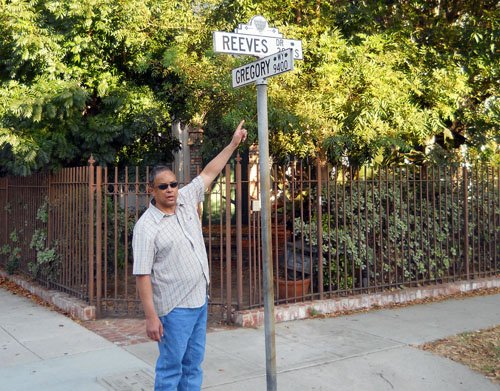
Where Greg meets Reeves…


